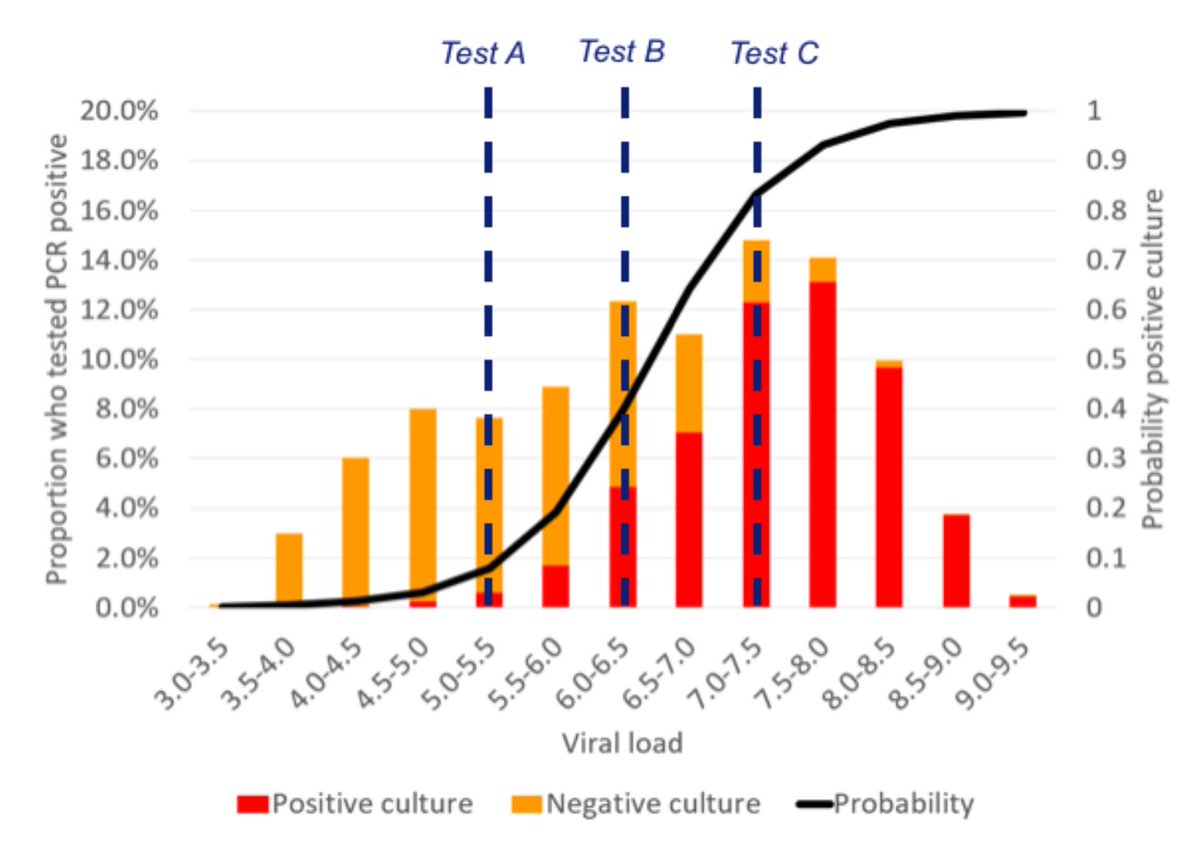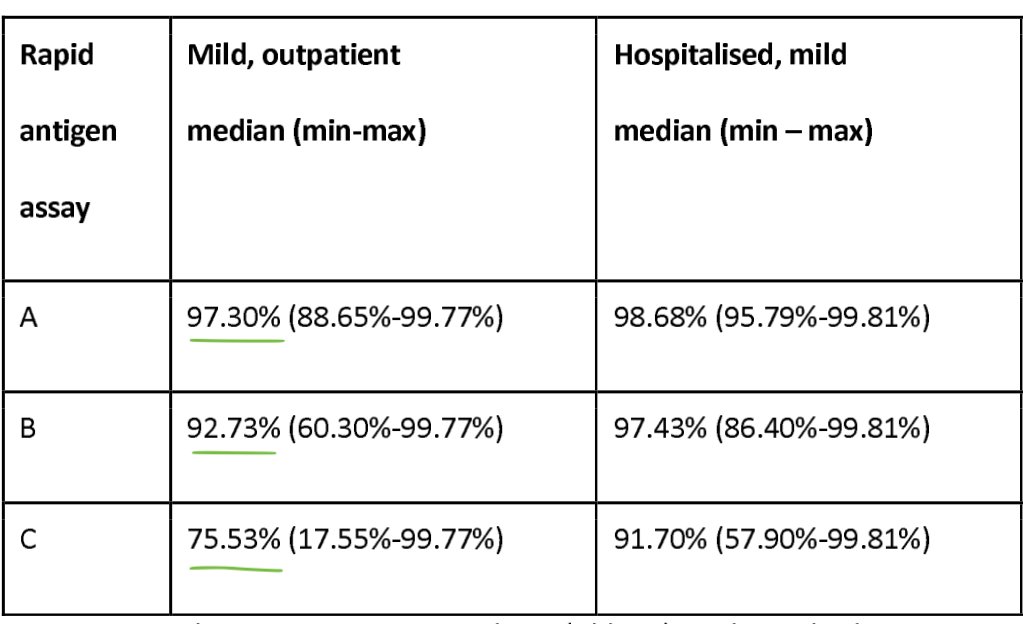How well do COVID rapid diagnostic tests (RDTs) perform in detecting infectious people?
A new preprint from @JankovanBeek @IgloiZsofia & @MarionKoopmans finds that the answer depends on (1) which test you use & (2) viral load. Here& #39;s a quick summary. https://www.medrxiv.org/content/10.1101/2020.10.13.20211524v2">https://www.medrxiv.org/content/1...
A new preprint from @JankovanBeek @IgloiZsofia & @MarionKoopmans finds that the answer depends on (1) which test you use & (2) viral load. Here& #39;s a quick summary. https://www.medrxiv.org/content/10.1101/2020.10.13.20211524v2">https://www.medrxiv.org/content/1...
Samples from a drive-through test site in the Netherlands were tested by both PCR and RDT.
In addition, samples were cultured to see whether the virus would grow on Vero cells. A positive viral culture is not the same as "infectiousness" but is arguably closely related.
In addition, samples were cultured to see whether the virus would grow on Vero cells. A positive viral culture is not the same as "infectiousness" but is arguably closely related.
The study shows that viral load (measured by PCR) and the probability that a sample is culture+ (red) are related: >50% probability culture+ when viral loads are > 6.5. (In modeling with @michaelmina_lab et al, we assumed a threshold at 10^6. See thread.) https://twitter.com/DanLarremore/status/1276260291764826112">https://twitter.com/DanLarrem...
Not all "rapid tests" have the same performance!
You& #39;ll notice the authors show 3 dashed lines: limits of detection for A (Abbott Panbio, SD Bio Standard Q), B (Coris Bio Respi-Strip, Genbody) and C (RapiGEN Biocredit).
Table shows % of culture+ samples these tests identify
You& #39;ll notice the authors show 3 dashed lines: limits of detection for A (Abbott Panbio, SD Bio Standard Q), B (Coris Bio Respi-Strip, Genbody) and C (RapiGEN Biocredit).
Table shows % of culture+ samples these tests identify
This is a spot where your view of the data depends on the lenses in your glasses. On the one hand, experts like @SBtotheDub & @andreaprinzi may rightly point out that even for group A tests, you miss 1-2 in 20. (The White House has shown the pitfalls of trusting a negative RDT!)
On the other hand, from the perspective of public health & populations, these findings are exciting: ability to rapidly flag 9 of 10 people with culture+ virus would greatly impact transmission. In short, tests must be matched to their uses—context matters https://www.nejm.org/doi/full/10.1056/NEJMp2025631">https://www.nejm.org/doi/full/...
One weakness, discussed by authors: they did not evaluate asymptomatic individuals. Analyzing a set of samples from asymptomatics will be a critical next step.
Still, this is a clear but nuanced study showing RDTs could play role in COVID test strategies. https://www.medrxiv.org/content/10.1101/2020.10.13.20211524v2">https://www.medrxiv.org/content/1...
Still, this is a clear but nuanced study showing RDTs could play role in COVID test strategies. https://www.medrxiv.org/content/10.1101/2020.10.13.20211524v2">https://www.medrxiv.org/content/1...

 Read on Twitter
Read on Twitter



